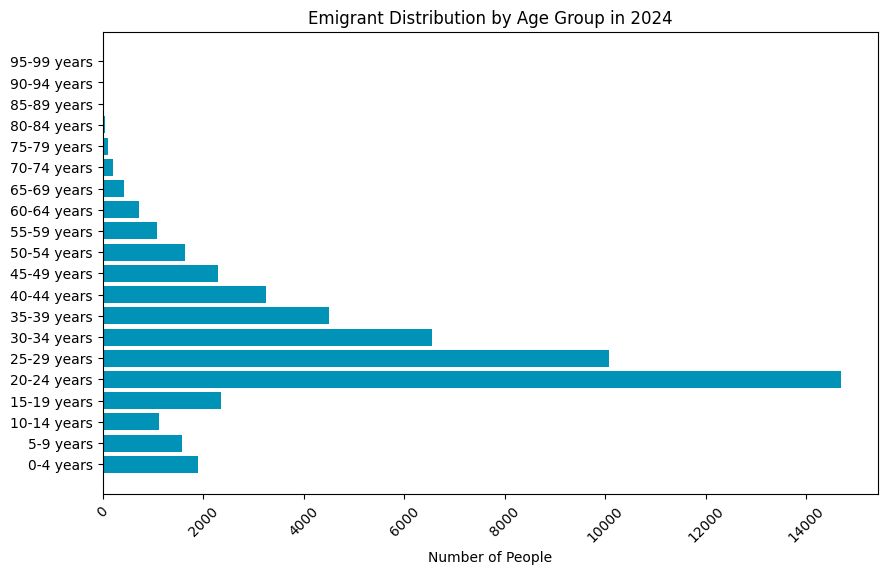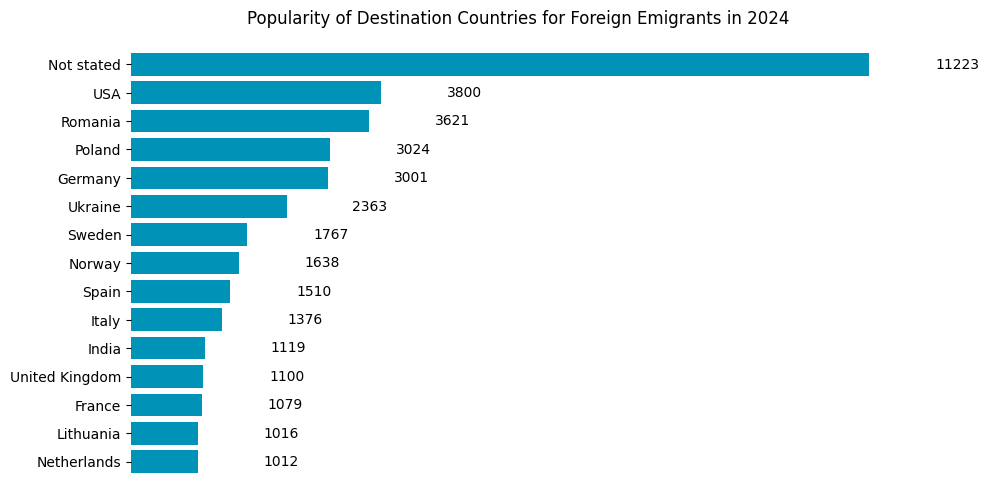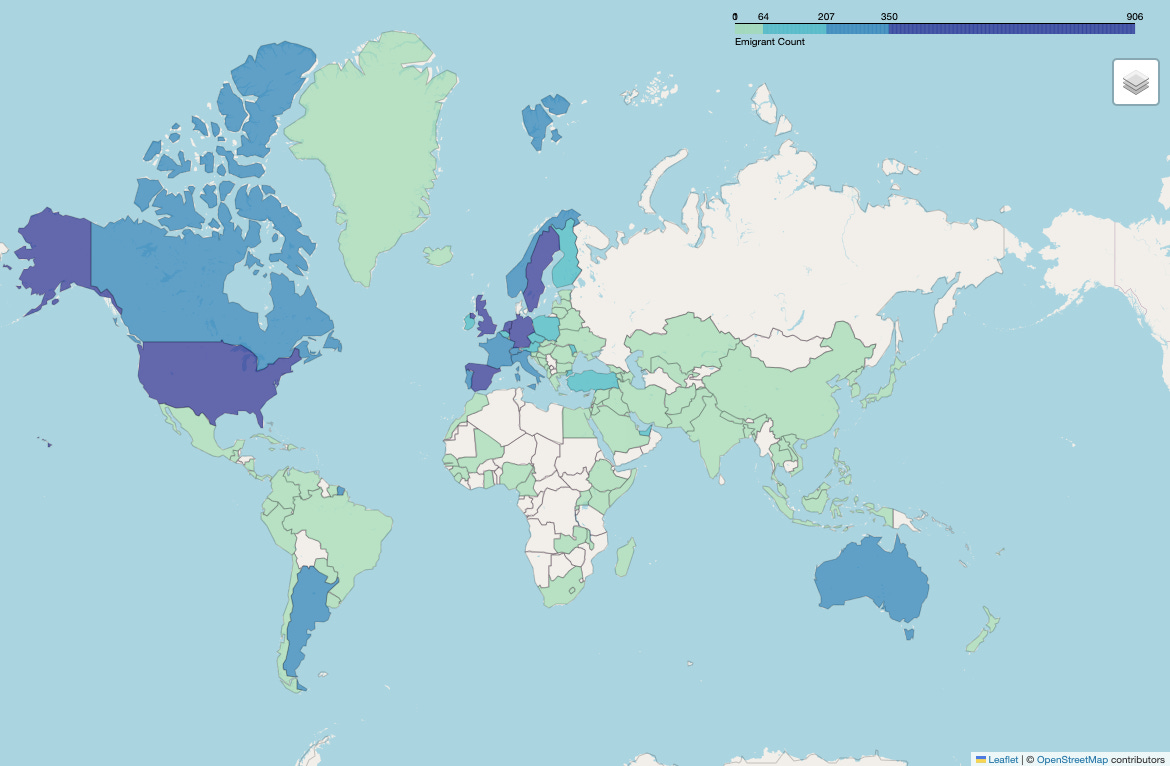Has Denmark figured out how to retain internationals yet?
Last year, I explored the publicly available data1 on immigration and emigration to see how well Denmark was retaining internationals. I thought it might be interesting to see if the new initiatives launched in the kommuner to recruit and retain were bearing fruit. Are more internationals staying?
The Short Answer
Not really. It depends how you look at it. Since more people are arriving, net migration has been increasing but raw emigration figures are still increasing.
Since Russia invaded Ukraine in 2022, migration figures in Denmark have reflected the massive upheavals in European migration. In 2024, emigration of Ukrainians started to decrease. Assad in Syria was deposed right at the end of of 2024, so we will see what effect that had on net migration next year.
In other words, this might be a rare “normal” year with no pandemics or refugee crises driving or curbing migration.
The Numbers
Key stats: 52,580 internationals left (up 4%) but net migration increased by 5%
If we break down the emigrants by age group we can see the usual global patterns of migration being greatest for people in their 20s. Often these people studied at a Danish university, possibly as an exchange student where the intention is explicitly a short stay.
We can also see that childhood migration is more common for the under 5s and for high schoolers. Families are less likely to move countries with middle school aged children.
Who's Leaving?
As you might expect, younger people make up the bulk of emigrants but a significant proportion are mid-to-senior career age or children. Families and older adults are much more likely to have compelling reasons to stay in a country like wanting continuity in schooling or having bought a house. Despite those pull factors, thousands of them are leaving.
Looking at where they are going, it is a similar picture to last year’s figures:
By and large, mostly people are returning to their home country.
There is another group of emigrants that are worth a look: people who leave Denmark to live in another country.
The nationalities that are serially expatriating are:
Italy2
Ukraine
Germany
Romania
India
and they are going to
Germany
Sweden 3
Spain
USA
United Kingdom
So What?
Net migration will always be affected by factors outside of Denmark’s control such as frail elderly parents, planned short stays and plain old homesickness. There will always be a bit of churn when we look at highly mobile professionals and students.
However, Denmark is banking on immigrants rescuing it from its population growth issues and predicted labour market gaps. If people are in fact leaving due to factors within Denmark’s control, then the growth in net migration that we are seeing will not be sustainable. There are only so many people who are in the position to move countries, and if they give Denmark a try only to leave for Germany after a couple of years, that is a major loss for Denmark. They probably will not come back. It is not cheap to recruit, especially so for internationals and eventually it might become harder to get people to give Denmark a try if it gets a reputation for being a difficult country to live in as an international.
Why did they leave?
Migration back home has increased significantly for people from the USA, Romania and Poland. Something seems to be going wrong. My hunch is that since firms are having a hard time sifting through 100s of applications for jobs, they are increasingly turning to automation tools. These tools are rejecting foreigners out of hand for not having Danish work experience or Danish qualifications, so spouses are left out of the job market just like new graduates are. Then you get a vicious circle where the career break gets too long so no one wants to take a chance on them. It is not possible to expect people fresh off the boat to build up a professional network and get a job before their employment gap looks concerning. If the spouse cannot find work then the whole family leaves. Denmark is not a one-family-income kind of place.
There is also the matter of how difficult it is to get permanent residency. The politicians in national government have found that tough immigration policies are vote winners, so they make decisions that are out of step with local political ambitions. If you are an American family looking to stop renting and buy a house, having temporary residency can make it hard to find a bank that will give you a mortgage. If you are thinking about setting up your own business, again, having temporary residency can make that impossible unless you have a pile of cash lying around to get you started. The kommuner wouldn’t mind these people staying but the national politicians want to look tough on immigration so they make it ever harder to live here long term.
What I’m curious about:
Much has been made about the labour market gap of 2030, where Denmark has predicted it will not have enough people in key areas and so needs immigrants to take those jobs. Since this is a projected need, does it make sense to recruit people now when those jobs are not available yet? I need to take a look at employment statistics to see which jobs truly are in short supply of workers.
I am also curious about how I can personally know dozens of well-qualified international people who are out of work, and still hear about Denmark needing to go abroad to recruit workers. What is going wrong that they are not able to tap into this supply of employees?
The fact is that I just do not know why people are leaving. Lucky for us, Copenhagen Capacity are conducting an Expat Survey so if you are an international in Denmark or you already left, you can let them know how it is/was for you. I cannot wait to hear the results so please share your perspectives with them so we can all be more informed and start to figure out solutions.
My working in my Jupyter notebook 4
Statbank.dk specifically INDVAN, UDVAN & VAN2AAR datasets
CAUTION: there are quite a few people with dual Italian citizenship in Denmark, so they might be “going home”
In the case of Sweden, many of these serial expats were living in the Capital Region so it is not clear if they are keeping their old jobs and commuting over the bridge. It’s also not clear if that’s a loss or a win for Denmark when that happens.
if you are curious about how I arrived at the stats. The dataset is open source, so feel free to adapt and use my analysis and visualisations however you wish.







